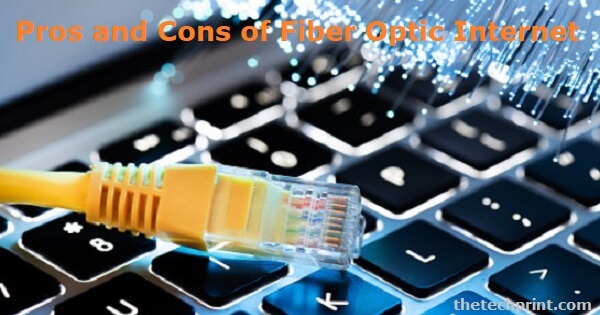The internet has become a basic necessity rather than a luxury in recent years. Everyone wants constant access to essential apps and cloud services on their PCs, laptops, and smartphones. Fiber optic internet is becoming increasingly popular being the fastest means of accessing the internet. This type of internet connection uses optical fibers to transmit data at high speeds. Data travels through fiber cables in the form of light; but what if a FOC gets damaged? You'll lose the connection permanently. Weigh all the pros and cons of fiber optic internet before you switch to it.
Browsing the internet and watching television at speeds never before witnessed and without annoying signal interruptions. This may seem utopian, but it is already a reality in many ways. The fiber optic network is increasingly being used by more organizations and families. Below are some of the key pros of fiber optic internet.
Fiber optic technology uses pulses of light to move information along the strands of plastic or silica. Copper wires, on the other hand, have been used to transmit electricity-based signals.
The difference in data transmission is very apparent; copper wires can transmit 50Mbps (megabits per second), whereas fiber optic cables can only transmit 1.05Pbps (petabits per second). Sending 5,000 high-definition movies every second is comparable to this.
The delay in data transmission is very low with fiber optic internet. That’s why it’s the best possible solution for real-time applications like online gaming, video conferencing, and VoIP (Voice over IP). Low latency as one of the notable pros of fiber optic internet, also results in better clarity of voice and images during calls or meetings.
Fiber optics don’t use electrical impulses to transmit data like copper cables. So there is no scope for any loss or corruption of data due to electromagnetic interference (EMI). This makes fiber optics a very reliable option, especially for businesses that need to send confidential or sensitive data across long distances.
Businesses can easily scale up their bandwidth requirements with fiber optics. This is because the cables have a very high carrying capacity. They can be used to transmit data at speeds of up to 10Gbps (gigabits per second), which is much higher than what copper wires can manage.
Fiber optic internet is not just limited to cities or large towns. With the right infrastructure in place, even remote and rural areas can be connected to this high-speed network. This is one of the key reasons why the government is investing in building a nationwide fiber optic network in many countries.
Fiber optic cables are made from natural materials like glass and silica. They don’t give off any electromagnetic radiation, making them safe for the environment. They are also 100% recyclable, which further reduces their carbon footprint.
Fiber optic internet comes with a few disadvantages as well, which you should be aware of before making the switch.
Fiber optic cables and equipment are very expensive. This makes it difficult for small businesses and individual users to afford this type of internet connection. The installation process is also complicated and requires specialized skills, which further adds to the cost and to the cons of fiber optic internet setup.
Fiber optic cables are very delicate and can be easily damaged by weather conditions or physical contact. Even a small nick in the cable can disrupt the data flow and cause intermittent signal interruptions. This can be a major problem in areas that are prone to earthquakes or severe weather conditions.
Fiber optic internet is not widely available yet. It is mostly confined to large urban areas and is not an option for those who live in rural or remote areas. Even in cities, the coverage is often patchy and there are many dead spots. This limits the potential of this technology and many people and communities still go through these issues.
Fiber optic cables are highly sensitive and can be easily damaged by changes in temperature or humidity. They are also susceptible to physical damage, which can disrupt the signal and cause data loss. This makes them less reliable than copper wires, which are much more durable.
Conclusion
Upon weighing the pros and cons of fiber optic internet, the conclusion is quite easy to draw. In comparison to other broadband connections, fiber internet is faster, more dependable, secure, and scalable. When you take a long-term view, its high up-front costs appear to be just a blip on the radar. And, with added benefits like cheaper phone service and television packages, fiber optic internet is a great investment for any home or business.

There are several drawbacks to consider when choosing between fiber optic networks. These include physical damage, monetary issues, structure, and the potential for a Fiber fuse.
If you bend them too far, they will snap. Installing optical fibers is more expensive and requires the aid of an expert. They aren't as durable as wires.
Fiber optic internet connections are at least 2,000 times faster than conventional cable Internet and 80 times faster than DSL. Fiber is the best option for most people because it costs less each month by about $10 to $20.
If the speed on both networks varies, you'll notice that fiber optic connections have considerably greater bandwidth than wireless connections. Because all users of a wireless network are sharing the same network and utilizing the same resources, it becomes quite slow during peak hours.